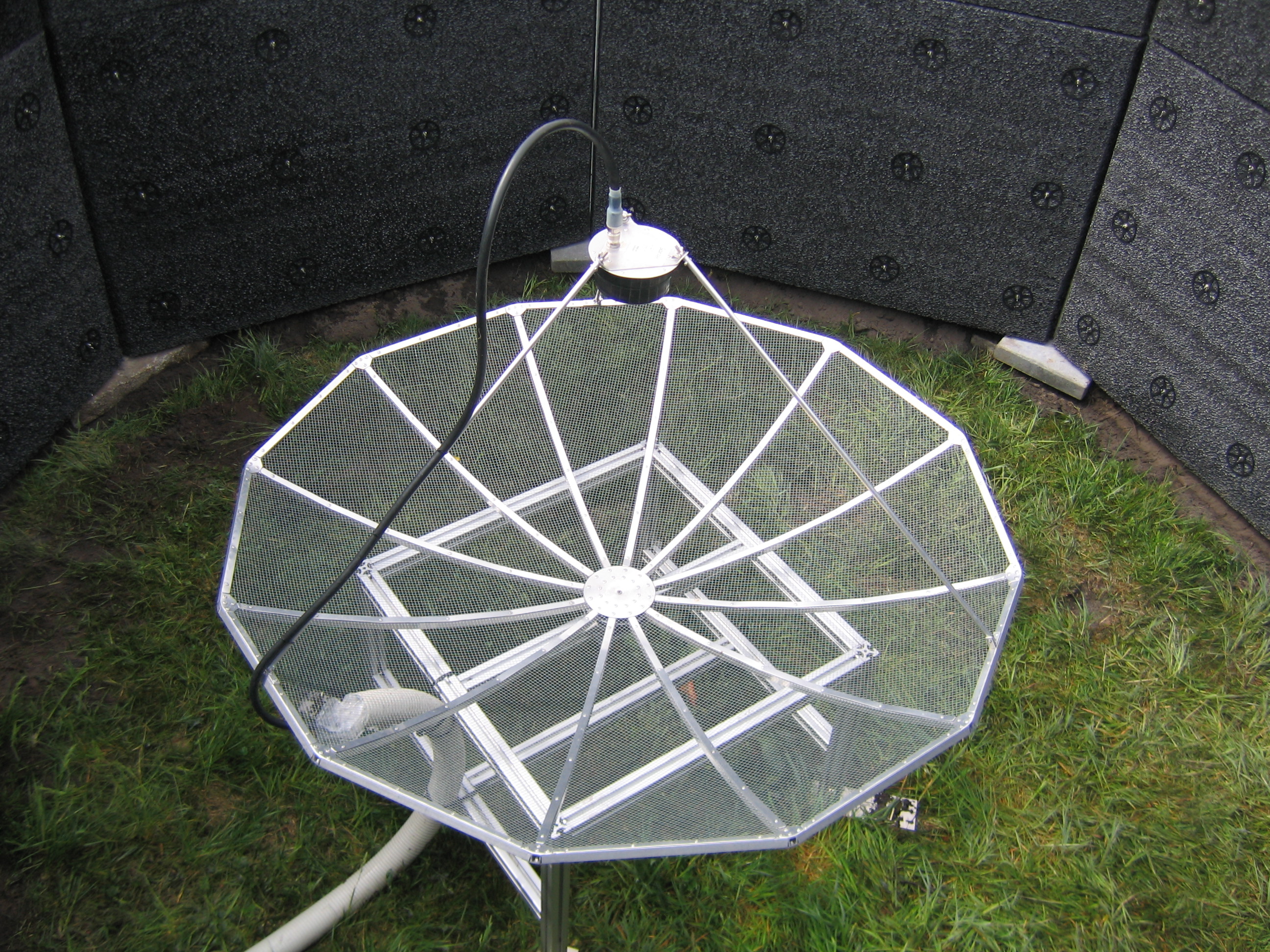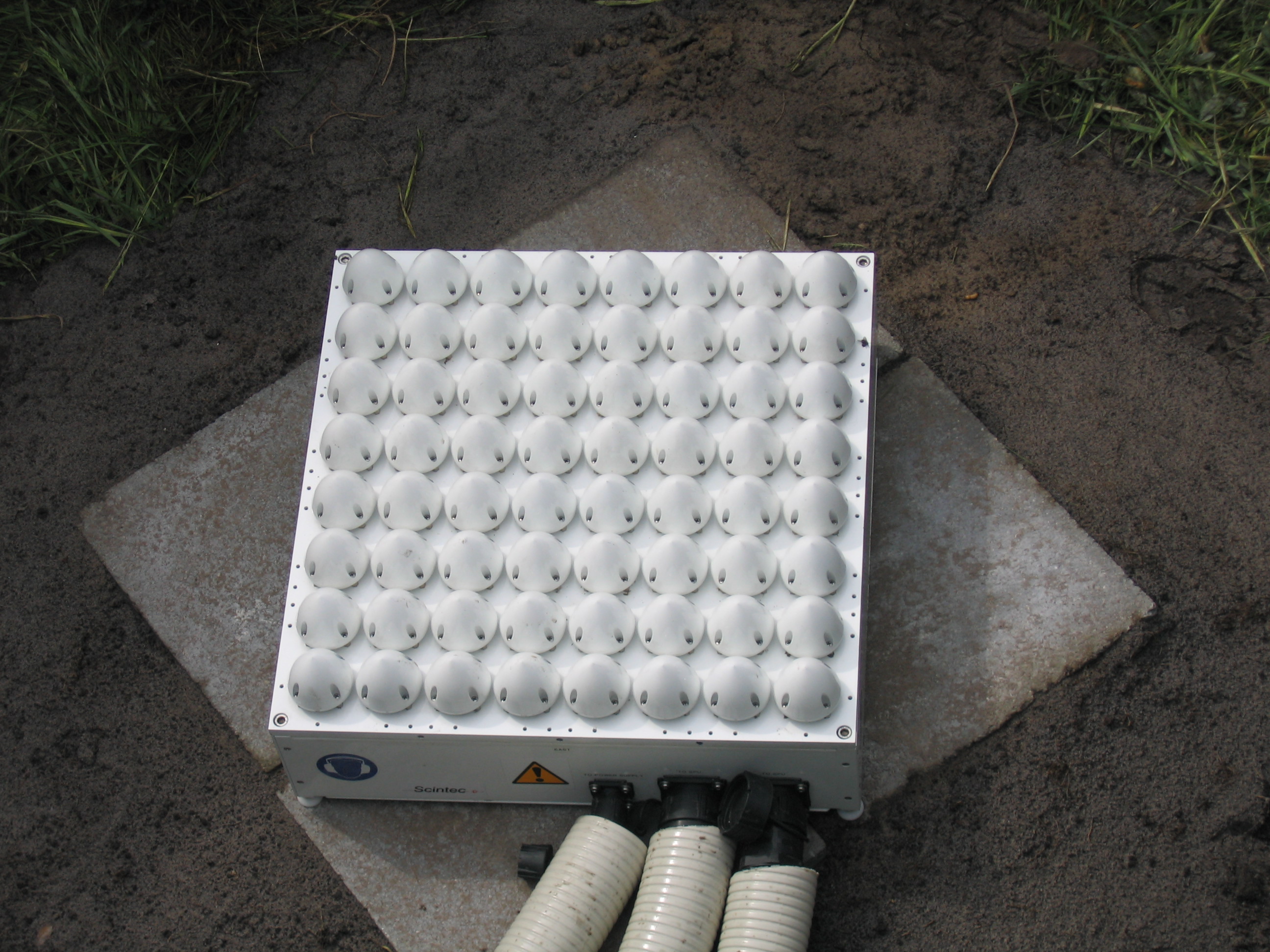


Sound Detection And Ranging with Radio Acoustic Sounding System
The SOSAR-RASS system is used to determine the vertical profile of the optical turbulence in the lower atmospheric boundary layer With a height resolution of 5 m Cn2 values between 40 and a maximum of 400 m height can be obtained.
In SODAR, acoustic pulses are emitted vertically upwards. These are scattered back due to temperature fluctuations in the atmosphere. The height profile of CT2 can be derived from the intensity and transit time of the backscattered signals. The RASS system emits radio waves which are refracted by the transmitted acoustic signals. An altitude profile of the virtual temperature can be derived from these backscattered signals. Pressure profiles are calculated from ground pressure values and the barometric altitude formula. From the combination of the two systems and the pressure profile the vertical profile of Cn2( h) is determined.
The SODAR system is also used to record vertical profiles of the horizontal wind speed using the Doppler shift.
Result
The recorded vertical profiles of Cn2 shall serve to validate a newly developed model for the determination of the optical turbulence in the lower atmospheric boundary layer. They will also provide long-term statistics on the turbulence profiles that occur as a function of time of day, time of year and meteorological situations.
In addition, Fraunhofer IOSB has a database of ground-level Cn2 values over water and over land, measured at selected locations worldwide.
 Fraunhofer Institute of Optronics, System Technologies and Image Exploitation IOSB
Fraunhofer Institute of Optronics, System Technologies and Image Exploitation IOSB